Ray Hahn
Columbia University
A survey conducted in 1993, not exactly yesterday, listed the Top-10 Topics collected by American deltiologists (the word was very popular at the time). Universities, Colleges, and Schools was seventh on the list.
A curious collector would ask to see a list of the most collected institutions, but there is no evidence that such a list was compiled. If educational guesses would satisfy the inquisitive the following may be close, but far from definitive.
Ivy League Institutions
U. S. Military Academies
State and Community Universities and Colleges
Institutions grouped by sports affiliations
For the sake of argument, your editor decided to investigate which institution of higher learning could lay claim to being the most popular or most published. In truth, trying to learn such a statistic is reasonably close to a “fool’s errand,” but universities in the Ivy League seem to be the leaders among the arbitrary groups above and Columbia University seems to be the leader among the Ivy League institutions.
In what may be considered a thorough search for such information (I examined the cards for sale on the first five pages – approximately 500 cards – of an eBay search for “Columbia University,”) I found the following eleven postcard publishers: A. C. Bosselman Company, New York, NY; Alfred Mainzer (AlMa), Long Island City, NY; The Art Litho- Company, San Francisco, California; Curteich Company, Chicago, Illinois; Detroit Photographic Company, Detroit, Michigan; H. W. Haberman, Brooklyn, NY; Lumitone Photoprint, New York, NY; Rotograph Company, New York, NY; The Pictorial Company, Brooklyn, NY; Ullman Manufacturing Company, New York, NY; and New York Postcard Company, New York, NY.
The quality of the cards touched every base, from junk to superior. They were everything the experienced collector could imagine, but far above most, were the cards published by the H. W. Haberman Company of Brooklyn.
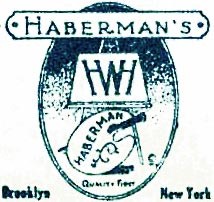
Haberman was born in Germany in 1876, immigrated to New York in 1893, and became a naturalize American citizen in 1895. In the Fourteenth Federal Census (1920) Henry claimed to be a lithographer/artist. The New York State Census of 1895 indicates his marriage to Emily, without children, living on West 108th Street, in Manhattan.
Haberman’s business was short lived (1923-1929), However he had other connections with companies the likes of Lumitone.
Since we know of his business practices, Haberman’s postcards of Columbia University can be dated from the mid- to late-1920s.
* * *
When founded in 1754 on the grounds of the Trinity Church, Manhattan, they called it King’s College. It was number five on the list of colonial institutions of higher learning, after: Harvard in 1650; William & Mary, 1693; Yale, 1701; University of New Jersey (Princeton), 1746. There is some disagreement regarding this list, but the foremost reason is whether or not the institution was formally chartered as a college with degree-granting powers until after the formation of the United States in 1776.
For thirty years King’s College functioned under a royal charter signed by King George II of Great Britain. After the American revolution (1784) a renaming to Columbia College occurred and a reorganization by a board of trustees headed by two former students, Alexander Hamilton and John Jay moved the campus to Morningside Heights and in 1896 the college became Columbia University.
* * *
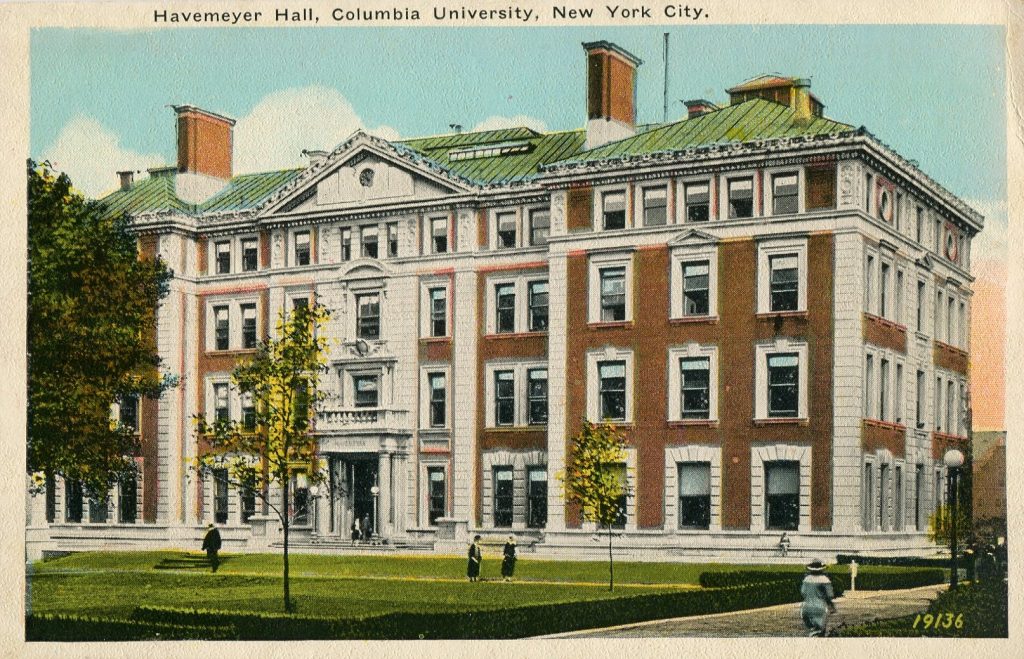
Havemeyer Hall is one of the six original buildings on the Morningside Heights campus. It is the home of the chemistry department and most of the classes in chemistry are held at this facility. The building is legendary for the number of Nobel Prize winners who have done research in this building, including Harold C. Urey who in 1934 discovered Deuterium, an isotope of hydrogen called heavy hydrogen.
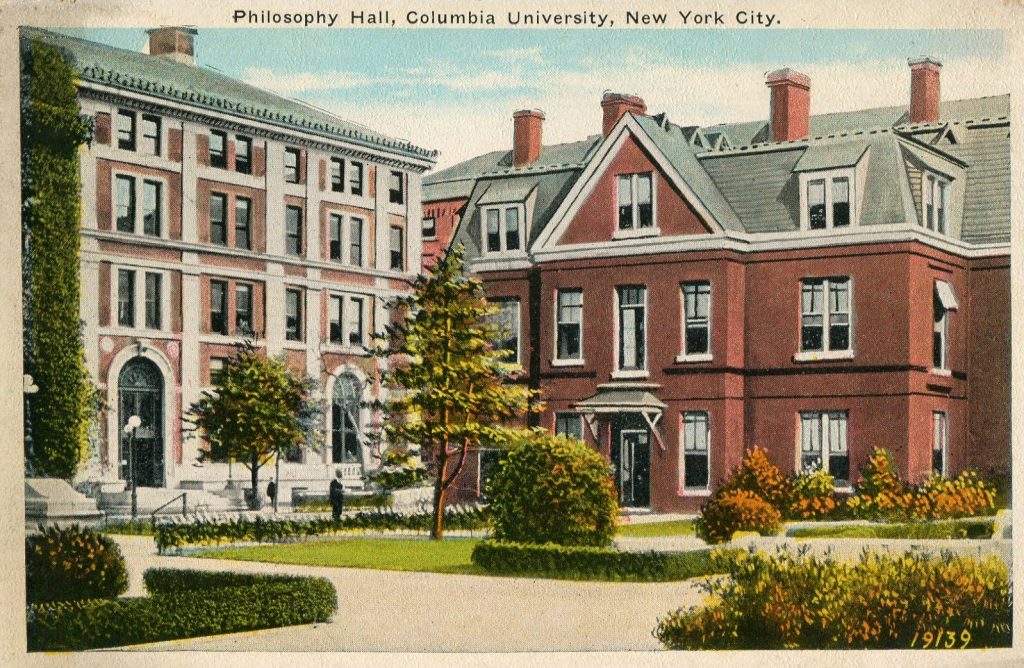
Philosophy Hall is a building on the campus where the English, French and Philosophy departments have their administrative offices and classrooms. The university writing center and the graduate school of arts are also here, one of the buildings designed by McKim, Mead and White. Built and completed in 1910, it is the site at which FM radio was invented in the early 1930s. The lawn in front of Philosophy Hall is where Auguste Rodin, the famous French sculptor, cast one of his most famous works, The Thinker.
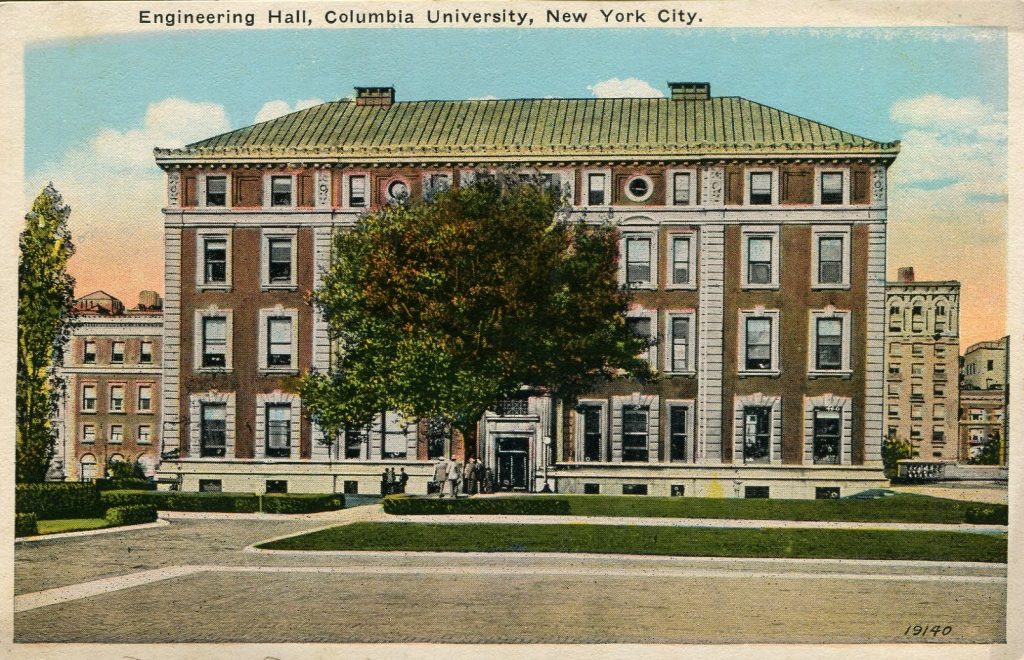
Engineering Hall was the name of the original classroom building that hosted the engineering and mathematics department. In 1966 when a new engineering building named the Seeley Wintersmith Mudd Building was built, Engineering Hall became Mathematics Hall.
There is plenty of evidence that the Seeley Wintersmith Mudd building is the least liked of all buildings on the campus. It is often thought that the building was named after Seeley Greenleaf Mudd, M.D. (1895 – 1968) who was a one-time student at Columbia but earned his medical degree from Harvard. Dr. Mudd (not to be confused with Doctor Samuel Mudd who set the broken leg of John Wilkes Booth) was a physician, professor, and major contributor to academic institutions. More than thirty campuses in America have buildings named after Seely G. Mudd, but the building at Columbia is named after his father.
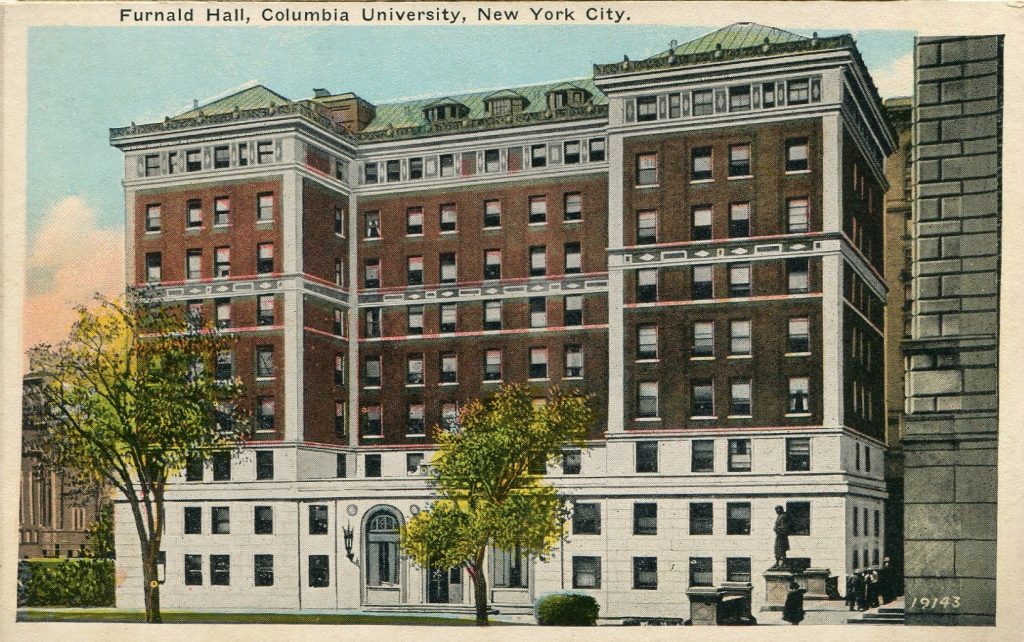
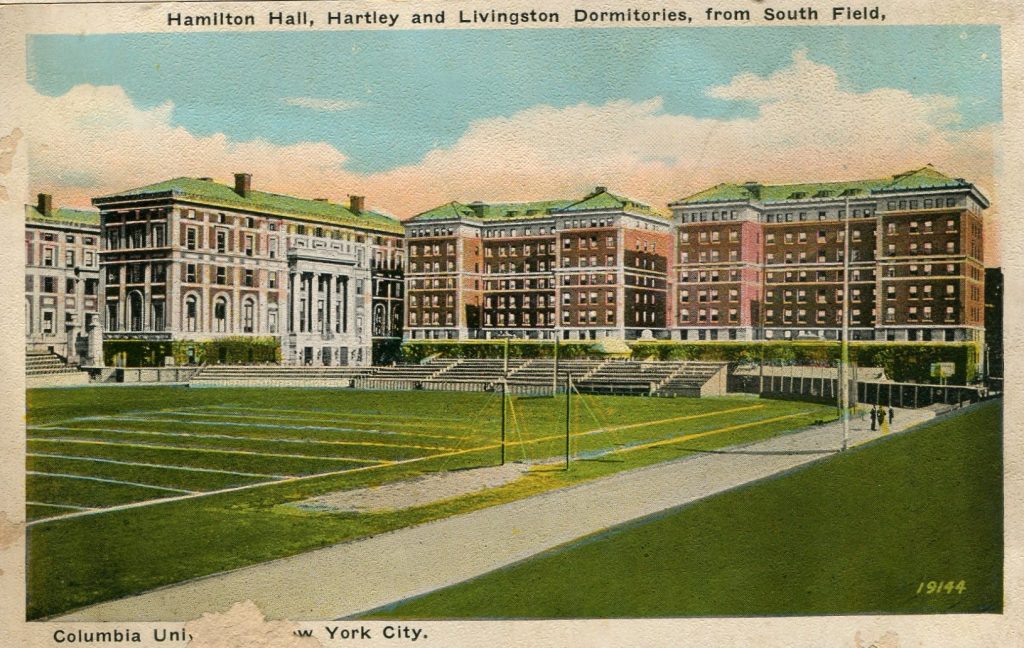
Furnald Hall is a ten-story student dormitory for First- and Second-year students.
Alexander Hamilton, the first Secretary of the United States Treasury, (if you can’t recall his persona, look at any $10 bill) is the namesake of Hamilton Hall. It is another of the McKim, Mead & White buildings completed in 1907, it is the home of the general administrative offices.
Hartley and Livingston Halls are residence dormitories. Construction began on Hartley Hall in 1904 and it opened in tandem with Livingston Hall in 1905. Built mostly with and inheritance from Marcellus Hartley, the owner of the Remington Arms company, it remains a memorial to Hartley’s grandson, M. H. Dodge, president of the YMCA in the United States.
Of interest to many are the names of students who once lived in these dormitories. Two, most everyone will recognize are the authors Allen Ginsberg and Jack Kerouac. Kerouac being unabashedly candid about the cockroach problem at Hartley.
Livingston Hall is now Wallach Hall.
Wallach Hall is the second oldest residence hall on the campus. It opened in 1905 as “Livingston Hall” after Robert Livingston, a founding father of the United States and alumnus of King’s College. The building’s name was changed after Ira D. Wallach donated approximately $2 million towards its renovation. This gave rise to the joke, “Livingston signed the Declaration of Independence, Wallach signed a check.”
* * *
In addition to the five Haberman postcards found herewith, there are several others.
Terrific postcards.Some of the
history too brief. Mention of
Ginsberg and Kerouac Ok but
you should have mentioned
Thomas Merton, whose Seven
Story Mountain mentioned not
only other famous students but
the world’s greatest English Department
featuring Mark Van Doren from the 1920’s
through the present. A postcard of the
baseball field (where Lou Gehrig played),
or Baker Field’s baseball field…the first
televised sports event in history would be
rare.
For a time, my maternal grandparents lived on Morningside Drive, and could easily walk to the Columbia campus. A few years ago, I saw a promotional video during a basketball telecast featuring author Herman Wouk, a Columbia alumnus, reciting a passage about his alma mater. I was surprised to learn he was still alive at the time (he died in 2019, a week-and-a-half shy of his 104th birthday).
All of this is NEWS TO ME. Thanks so much for digging out and sorting these details. I loved reading and learning about everything here. BRAVO.